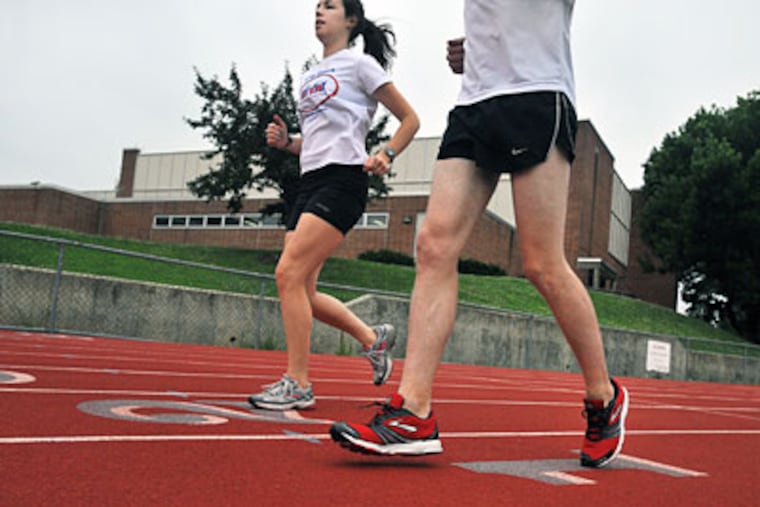Well Being: Running barefoot has not-so-obvious hazards
Part of the appeal of running is its simplicity. Alas, that very quality seems to foster the urge to complicate. Hence the profusion of overengineered running shoes and sophisticated training schemes.

Part of the appeal of running is its simplicity. Alas, that very quality seems to foster the urge to complicate. Hence the profusion of overengineered running shoes and sophisticated training schemes.
So the publication last year of Born to Run, Christopher McDougall's rollicking best seller that makes the case for running barefoot and argues that high-tech running shoes may be causing more harm than good, was welcomed by many who believe that less is more.
Across the land, thousands have shed their Nikes and Asics and begun jogging and running unshod. Their hope is that it will cure their arthritic woes and elevate their stamina to that of the Tarahumara, a tribe of Mexican endurance prodigies capable of running 100 miles and more a day with nothing more than pads of leather strapped to their feet.
Jason Kilderry began running in bare feet three years ago, well before it became a fad. A running coach with a deep interest in exercise science, he endorses the practice - in small doses.
"It strengthens the intrinsic muscles of the feet," says Kilderry. "It has long been recommended by physical therapists as rehab exercise - but not as a training tool."
Kilderry, 28, of Roxborough, coaches Fast Tracks, a running club whose members tackle distances ranging from 5K to ultra races. He also tries to improve the performance of runners and triathletes through his business, ETA Coach (ETA = Endurance Training Achievement). He calls barefoot running "a stimulus plan for podiatrists, orthopedists, and physical therapists."
The reason: Barefoot running subjects the bones, muscles, tendons, and ligaments of the lower legs and feet to enormous stress, Kilderry says.
Too many folks are running barefoot without preparing adequately and without giving their bodies time to adapt, Kilderry laments. Worse, they are running shoeless on concrete and macadam instead of surfaces that are natural and forgiving.
The result: inflammation of the Achilles' tendon and the plantar fascia, the cord of connective tissue that runs along the sole; and stress fractures in the metatarsal bones of the feet and the part of the leg where shin splints normally occur.
Kilderry sells running shoes part-time at the Running Place in Newtown Square and South Jersey Running and Triathlon Co. in Mullica Hill. He believes in their value but also concedes they can cause the muscles and connective tissue of the feet to atrophy. While sprinting across the plains with bare feet may have been ideal for our primitive ancestors, we civilized folk who have been wearing shoes all our lives need artificial protection and support.
At 5-8 and 135 pounds, Kilderry is built like a runner. At Rowan University, he ran cross-country and track, usually in the middle of the pack, partly because he was prone to injury. Looking back, he blames over-training; his body was incapable of 100-mile weeks. "I could have improved exponentially with training that was more quality than quantity," he says.
Training load, Kilderry contends, is the primary cause of injury. Simply put, people do too much too soon.
"Runners injure themselves, not shoes," he says.
Thirteen months ago, Kilderry had a kidney transplant. (Kidney disease runs in the family.) The experience inspired a desire to compete in the World Transplant Games in Sweden in 2011. The 1,500-meter record is 4:26, and Kilderry hopes to break it.
He runs about 20 miles a week, including a small amount of barefoot running. On grass, he runs no more than four 50- to 100-yard "striders" at a 5K pace. Besides strengthening the feet, barefoot running makes you conscious of your stride, Kilderry says. (About one in eight runners overstrides, landing harder on the heels, he says. Barefoot runners tend to strike midfoot.) It also quickens leg turnover, reducing contact and impact time.
Thinking of going bare? Kilderry offers this advice: Begin by walking, always on grass, with something protective on your feet, such as Vibram FiveFingers, a glove-like foot pad. After a couple of weeks, try running, increasing the distance each week, from 50 yards to 75 to 100.
"The body can adapt to almost anything over time," Kilderry says. To reduce stress and avoid injury, "it's better to take baby steps than huge leaps."